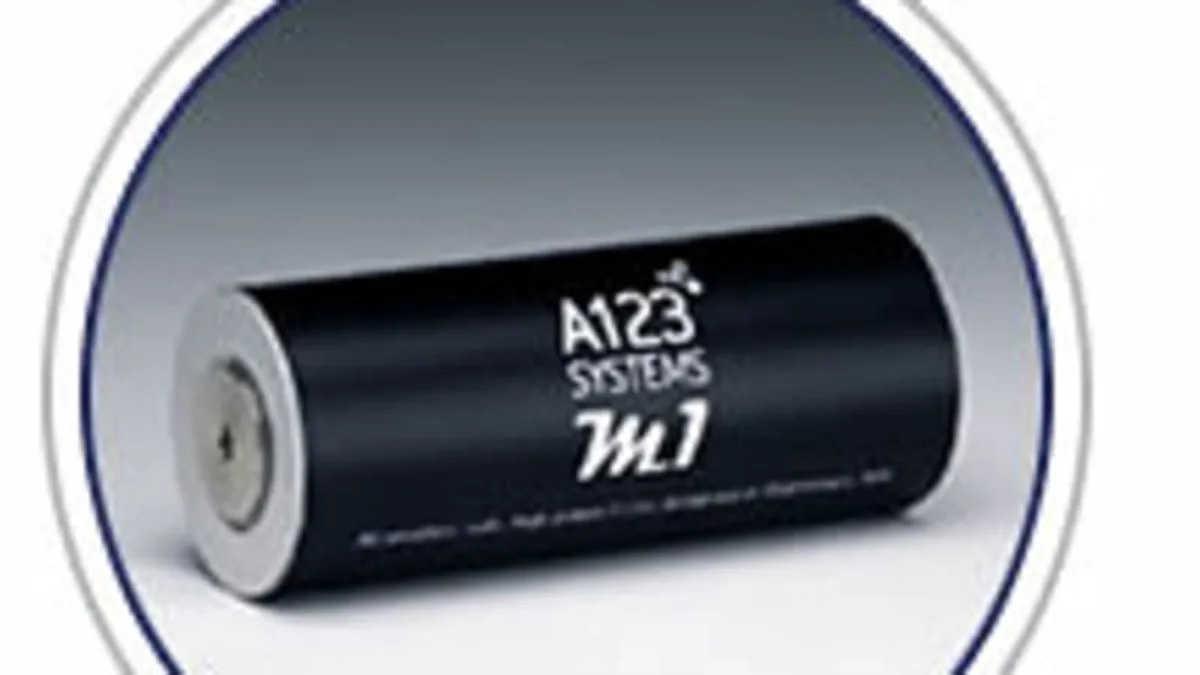Along with the recent unveiling of the breakthrough Chevy Volt came the admission by GM that they felt battery technology had a ways to go before plug-in hybrid electric vehicles (PHEV) can go mainstream. Digging into this, Technology Review has a feature article about the state of GM battery research as it stands today. In fact it is revealed that individual batteries make the grade, but there is still a big difference between using a single battery and chaining them together to power a vehicle. GM is pushing forward with signing development contracts in the hope that battery packs which meet the criteria will emerge during 2007.
Designing and manufacturing battery packs for vehicles requires the mutually exclusive problems of power, long-life and space to be overcome.
Needed: a battery pack capable of high reliability, long-life, great power and high energy density to fit in the restricted space of a car. Oh, and heat resilience, vibration resilience and a tendency not to burst into flame as some laptop batteries have recently been reported to do would be great as well. Thanks!
Luckily, it looks like lithium-ion (Li-Ion) batteries cover most of the problems, with research moving forward aggressively to solve the rest. Li-Ion technology has a much higher energy density than lead acid technology, allowing GM for example to wedge the EV-1's power into the Chevy Volt in a third of the area. That annoying tendency to burst into flames also looks to be solved with GM battery pack contractor A123 Systems developing a nanostructured iron phosphate-based electrode which is much safer than previous cobalt-oxide Li-Ion battery technology.
Last month, A123 Systems was awarded a $15 million development contract by the United States Advanced Battery Consortium (USABC), an organization composed of DaimlerChrysler Corporation, Ford Motor Company and General Motors Corporation. USABC awarded the contract in collaboration with the U.S. Department of Energy (DOE) to optimize the A123Systems proprietary doped nanophosphate battery technology for hybrid electric vehicle applications with a focus on systems that are high-power, abuse-tolerant, long lasting and cost effective.
Analysis: Build it and they will come could be the motto for PHEVs. When there is enough off-peak electricity on the grid to power a majority of vehicles on the road if they were PHEVs, efficiency all around is going to increase, and emissions radically decrease once next generation battery technology is rolled out.
Related:
[Source: Kevin Bullis / Technology Review]
Designing and manufacturing battery packs for vehicles requires the mutually exclusive problems of power, long-life and space to be overcome.
Needed: a battery pack capable of high reliability, long-life, great power and high energy density to fit in the restricted space of a car. Oh, and heat resilience, vibration resilience and a tendency not to burst into flame as some laptop batteries have recently been reported to do would be great as well. Thanks!
Luckily, it looks like lithium-ion (Li-Ion) batteries cover most of the problems, with research moving forward aggressively to solve the rest. Li-Ion technology has a much higher energy density than lead acid technology, allowing GM for example to wedge the EV-1's power into the Chevy Volt in a third of the area. That annoying tendency to burst into flames also looks to be solved with GM battery pack contractor A123 Systems developing a nanostructured iron phosphate-based electrode which is much safer than previous cobalt-oxide Li-Ion battery technology.
Last month, A123 Systems was awarded a $15 million development contract by the United States Advanced Battery Consortium (USABC), an organization composed of DaimlerChrysler Corporation, Ford Motor Company and General Motors Corporation. USABC awarded the contract in collaboration with the U.S. Department of Energy (DOE) to optimize the A123Systems proprietary doped nanophosphate battery technology for hybrid electric vehicle applications with a focus on systems that are high-power, abuse-tolerant, long lasting and cost effective.
Analysis: Build it and they will come could be the motto for PHEVs. When there is enough off-peak electricity on the grid to power a majority of vehicles on the road if they were PHEVs, efficiency all around is going to increase, and emissions radically decrease once next generation battery technology is rolled out.
Related:
[Source: Kevin Bullis / Technology Review]


Sign in to post
Please sign in to leave a comment.
Continue